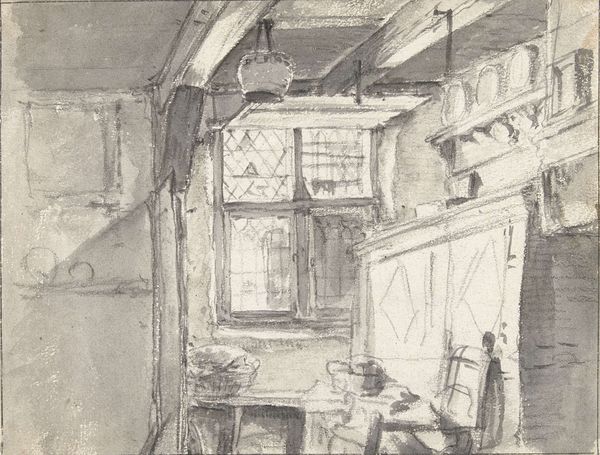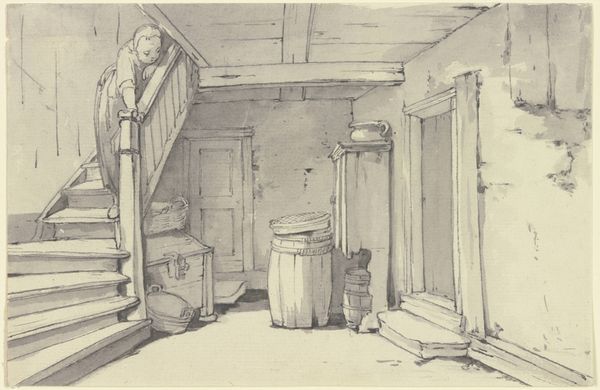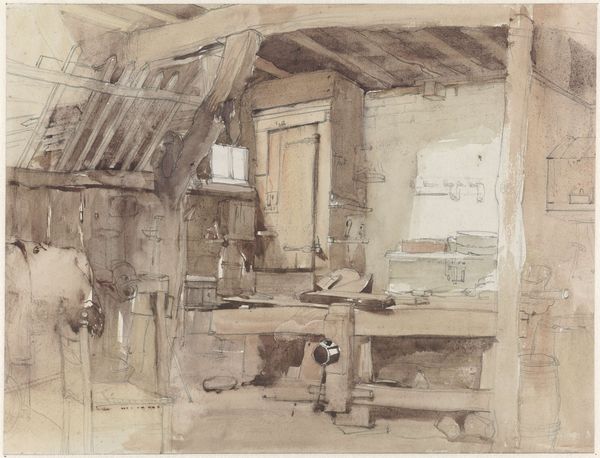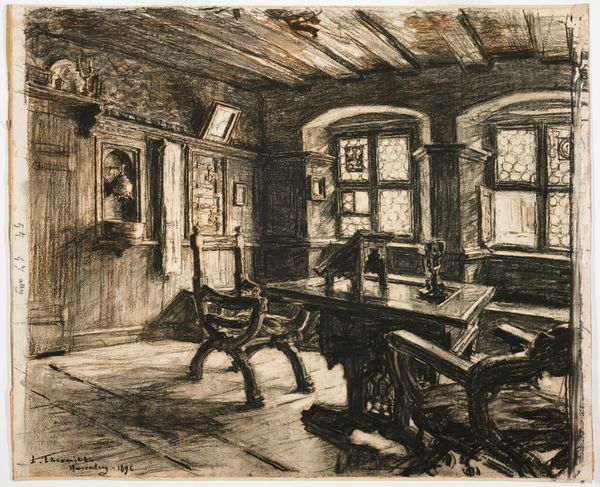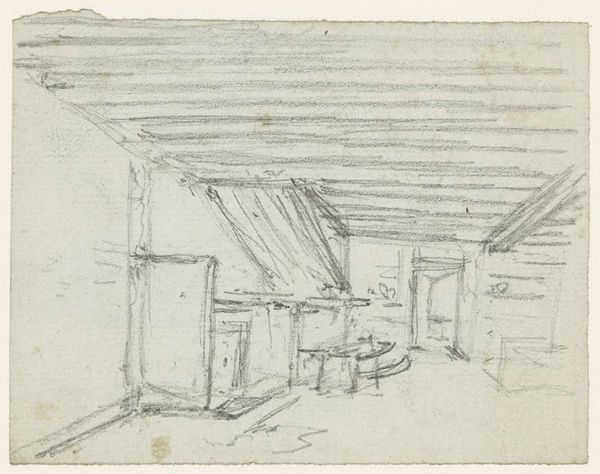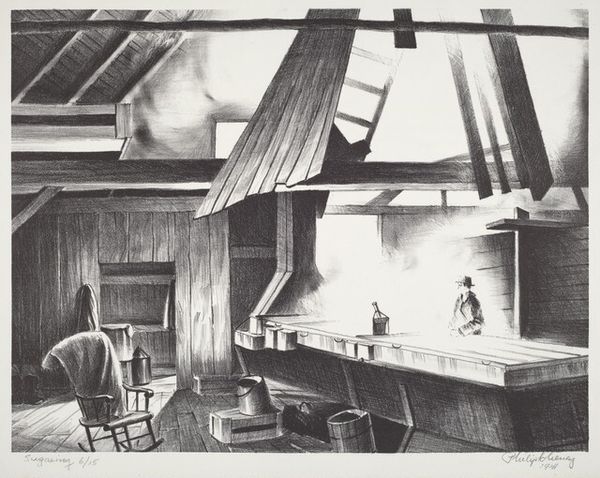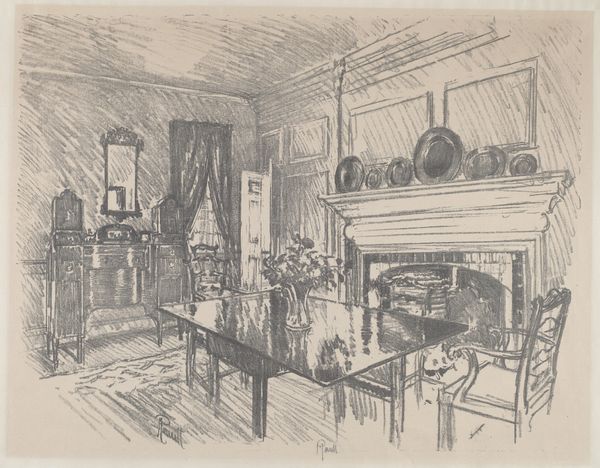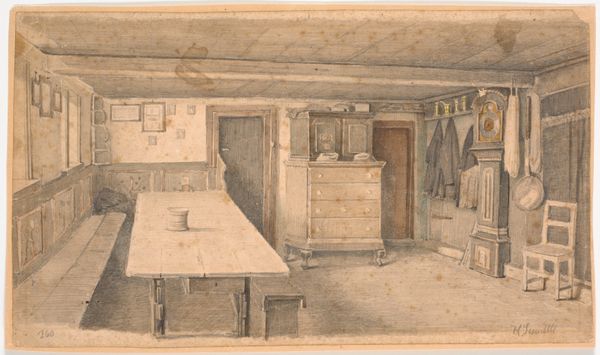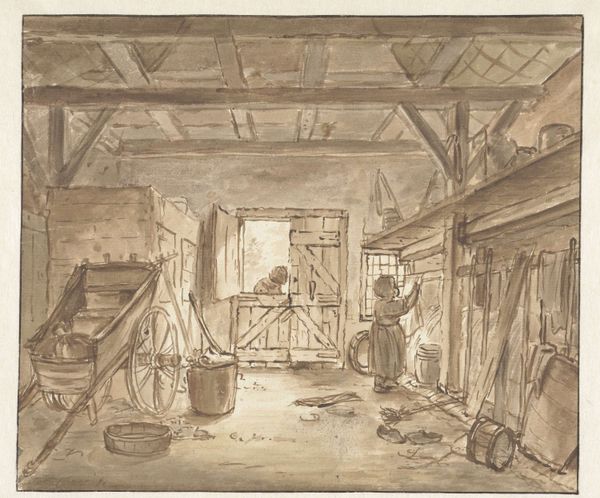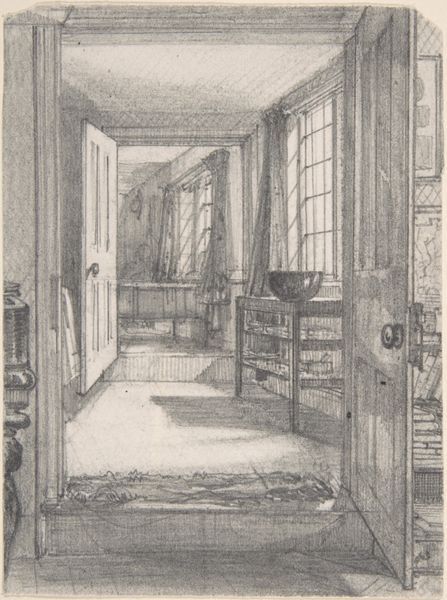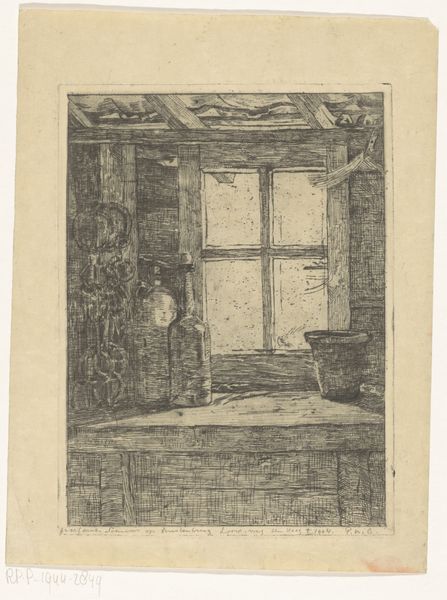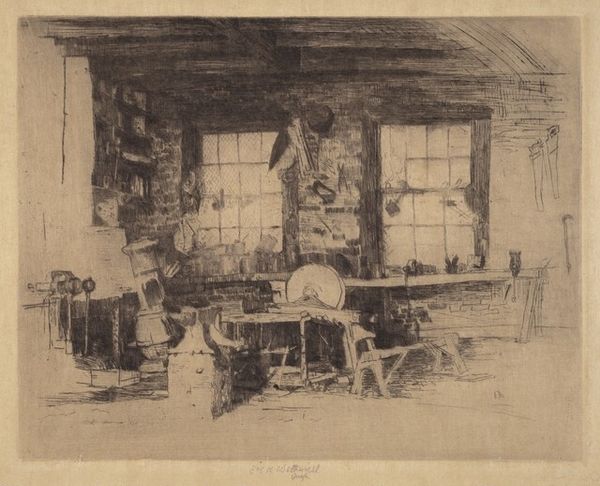
drawing, paper, glass, ink
#
drawing
#
dutch-golden-age
#
paper
#
glass
#
ink
#
cityscape
#
genre-painting
#
realism
Dimensions: sheet: 5 11/16 x 7 5/8 in. (14.5 x 19.3 cm)
Copyright: Public Domain
Curator: Thomas Wijck's "Workshop Interior," dating roughly from 1629 to 1677. The medium consists of ink and glass on paper and aligns with both the Dutch Golden Age and Realism movements. It’s currently housed here at the Metropolitan Museum of Art. Editor: This ink drawing pulls you into its intimate gloom—I feel as though I'm peering through a crack in the door into some ancient workspace where alchemists might have once concocted elixirs in smoky quietude. Curator: It is the interior of an artisanal workspace, focusing our attention on the means and materiality involved in production during that period. The drawing emphasizes the labor aspect rather than romanticizing the space, which sets it apart from standard genre paintings. Note how the tools, the glass implements, and the basic containers take center stage. Editor: I’m drawn to the diffused lighting; it almost feels photographic, freezing a quiet, working moment, emphasizing the transient, practical objects that define that period of industry. A visual record of daily labor but imbued with poetry somehow. Curator: I appreciate your poetic read! If you consider the urban context for this work within Dutch society, where such workshops were not only places of industry but also integral to economic vibrancy, the value changes. We're not only presented with glass and ink, but with reflections on capital. Editor: Indeed, but the muted tonality also makes me consider the impermanence of such labor… Like sand through an hourglass – oh, look, there is actually an hourglass hanging by the window! Maybe that wasn't such an abstract reading, huh? Curator: That tangible measurement of time passing right in the workshop. Precisely the intersection between practical necessity and allegorical significance common in Dutch art. The material value of labor intersects here perfectly with more nuanced symbolism, offering layered insights. Editor: So true! I'll leave feeling more attune to the subtle narratives ordinary scenes hold; a reminder of how work itself sculpts even mundane objects into something imbued with purpose, even a quiet, dusty poetry. Curator: An excellent consideration! A final material consideration then; reflect on how our own perspective shifts as we move from observing Wijck's tangible objects within their timeframe, to scrutinizing a contemporary reflection upon a former materiality.
Comments
No comments
Be the first to comment and join the conversation on the ultimate creative platform.
